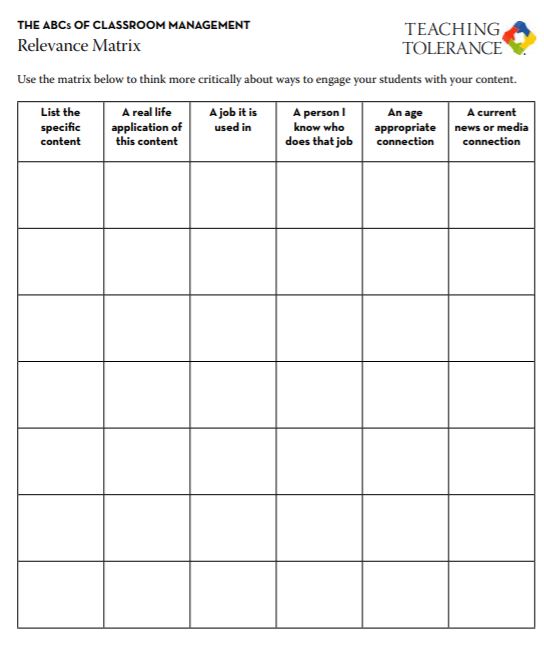Since arriving in North America in the 15th century, Africans in the United States were forced to navigate the social, economic, and physical limitations placed upon their lives by the institutions of slavery and the racist ideology that justified it. The following primary source set shows several ways that different communities responded to the outlawing of the Atlantic slave trade (and…

A large, discipline-specific vocabulary is a distinct challenge for Students with Disabilities and other diverse learners in History and Social Science. Concepts like "citizen" or "rights" are complex, culturally fluid, and difficult to picture. While the vast number of specific or historical technical terms like "longitude," "veto," "cuneiform," and "carpetbagger" require depth of context and…

The Relevance Matrix from Teaching Tolerance is a tool for teachers to consider means to connect content to real world applications and contexts that relate to students' lives. Thinking critically about engagement and effective classroom strategies can help students answer, "Why should I learn this?"
Strategies listed include:
Using the table teachers think…

This worksheet from Teaching Tolerance presents four quick, basic ideas to support active learning. Building on inspiration from Herbert Kohl, this tip sheet outlines uses of writing, drawing, images, and small groups to engage students. Any of these strategies could be used to assess student understanding.
Strategies described and illustrated include:
- …

From Social Justice Books: A Teaching for Change Project, this powerful site offers more than 60 curated lists of literature and history books on social justice and multicultural points of view for children, young adults, and educators. Book lists are organized by topic areas–including Changemakers, Disabilities, Immigration (and…

